1. Liguoro I, Pilotto C, Bonanni M, Ferrari ME, Pusiol A, Nocerino A, et al. SARS-COV-2 infection in children and newborns: a systematic review. Eur J Pediatr. 2020; 179(7):1029–1046. PMID:
32424745.

2. Kumar VH, Natarajan C, Siddharth M, Shivabalan S, Gopinath , Dhanalakshmi , et al. Post covid pneumonia pulmonary fibrosis and encephalitis in a term neonate with prenatal exposure to SARS CoV-2: a case report. IDCases. 2022; 27:e01414. PMID:
35096527.

3. Smith C, Odd D, Harwood R, Ward J, Linney M, Clark M, et al. Deaths in children and young people in England after SARS-CoV-2 infection during the first pandemic year. Nat Med. 2022; 28(1):185–192. PMID:
34764489.

4. Zhang C, Huang L, Tang X, Zhang Y, Zhou X. Pulmonary sequelae of pediatric patients after discharge for COVID-19: an observational study. Pediatr Pulmonol. 2021; 56(5):1266–1269. PMID:
33559979.

5. Colom AJ, Teper AM, Vollmer WM, Diette GB. Risk factors for the development of bronchiolitis obliterans in children with bronchiolitis. Thorax. 2006; 61(6):503–506. PMID:
16517579.

6. Moonnumakal SP, Fan LL. Bronchiolitis obliterans in children. Curr Opin Pediatr. 2008; 20(3):272–278. PMID:
18475095.

7. Alnajjar AA, Dohain AM, Abdelmohsen GA, Alahmadi TS, Zaher ZF, Abdelgalil AA. Clinical characteristics and outcomes of children with COVID-19 in Saudi Arabia. Saudi Med J. 2021; 42(4):391–398. PMID:
33795494.

8. Moya MI, Rodríguez LC, Gualteros SM, Centanaro OP, Carrasco LF. Bronquiolitis constrictiva en lactante postinfección por SARS-CoV-2. Univ Med. 2022; 63(1):148–154.
9. Yilmaz AI, Unal G, Pekcan S, Kademli O, Kaplan M, Akcan OM. A case of post-infectious bronchiolitis obliterans developing after Covid-19 infection. Ann Case Rep. 2021; 6(2):633.
10. Tomikawa SO, Adde FV, da Silva Filho LV, Leone C, Rodrigues JC. Follow-up on pediatric patients with bronchiolitis obliterans treated with corticosteroid pulse therapy. Orphanet J Rare Dis. 2014; 9(1):128. PMID:
25124141.

11. Pellegrino R, Viegi G, Brusasco V, Crapo RO, Burgos F, Casaburi R, et al. Interpretative strategies for lung function tests. Eur Respir J. 2005; 26(5):948–968. PMID:
16264058.

12. Stokes EK, Zambrano LD, Anderson KN, Marder EP, Raz KM, El Burai Felix S, et al. Coronavirus disease 2019 case surveillance—United States, January 22–May 30, 2020. MMWR Morb Mortal Wkly Rep. 2020; 69(24):759–765. PMID:
32555134.

13. Woodruff RC, Campbell AP, Taylor CA, Chai SJ, Kawasaki B, Meek J, et al. Risk factors for severe COVID-19 in children. Pediatrics. 2022; 149(1):e2021053418. PMID:
34935038.

14. Drouin O, Hepburn CM, Farrar DS, Baerg K, Chan K, Cyr C, et al. Characteristics of children admitted to hospital with acute SARS-CoV-2 infection in Canada in 2020. CMAJ. 2021; 193(38):E1483–E1493. PMID:
34580141.

15. McCormick DW, Richardson LC, Young PR, Viens LJ, Gould CV, Kimball A, et al. Deaths in children and adolescents associated with COVID-19 and MIS-C in the United States. Pediatrics. 2021; 148(5):e2021052273. PMID:
34385349.

16. Tripathi S, Christison AL, Levy E, McGravery J, Tekin A, Bolliger D, et al. The impact of obesity on disease severity and outcomes among hospitalized children with COVID-19. Hosp Pediatr. 2021; 11(11):e297–e316. PMID:
34168067.

17. Mafort TT, Rufino R, Costa CH, Lopes AJ. Obesity: systemic and pulmonary complications, biochemical abnormalities, and impairment of lung function. Multidiscip Respir Med. 2016; 11(1):28. PMID:
27408717.

18. Sanchis-Gomar F, Lavie CJ, Mehra MR, Henry BM, Lippi G. Obesity and outcomes in COVID-19: when an epidemic and pandemic collide. Mayo Clin Proc. 2020; 95(7):1445–1453. PMID:
32622449.

19. Lee YS, Kim JW, Osborne O, Oh DY, Sasik R, Schenk S, et al. Increased adipocyte O2 consumption triggers HIF-1α, causing inflammation and insulin resistance in obesity. Cell. 2014; 157(6):1339–1352. PMID:
24906151.

20. Zachariah P, Johnson CL, Halabi KC, Ahn D, Sen AI, Fischer A, et al. Epidemiology, clinical features, and disease severity in patients with coronavirus disease 2019 (COVID-19) in a children’s hospital in New York City, New York. JAMA Pediatr. 2020; 174(10):e202430. PMID:
32492092.

21. Zhu Z, Hasegawa K, Ma B, Fujiogi M, Camargo CA Jr, Liang L. Association of obesity and its genetic predisposition with the risk of severe COVID-19: Analysis of population-based cohort data. Metabolism. 2020; 112:154345. PMID:
32835759.

22. Crispi F, Crovetto F, Larroya M, Camacho M, Tortajada M, Sibila O, et al. Low birth weight as a potential risk factor for severe COVID-19 in adults. Sci Rep. 2021; 11(1):2909. PMID:
33536488.

23. Huang K, Liu J, Lv W, Chu Y, Li B, Wu P, et al. Analysis of risk factors of bronchiolitis obliterans in children with Mycoplasma pneumoniae bronchiolitis. Comput Math Methods Med. 2022; 2022:9371406. PMID:
35242215.

24. Lee E, Young Lee Y. Risk factors for the development of post-infectious bronchiolitis obliterans after Mycoplasma pneumoniae pneumonia in the era of increasing macrolide resistance. Respir Med. 2020; 175:106209. PMID:
33186845.

25. Richardson S, Hirsch JS, Narasimhan M, Crawford JM, McGinn T, Davidson KW, et al. Presenting characteristics, comorbidities, and outcomes among 5700 patients hospitalized with COVID-19 in the New York City area. JAMA. 2020; 323(20):2052–2059. PMID:
32320003.

26. Schaefer IM, Padera RF, Solomon IH, Kanjilal S, Hammer MM, Hornick JL, et al. In situ detection of SARS-CoV-2 in lungs and airways of patients with COVID-19. Mod Pathol. 2020; 33(11):2104–2114. PMID:
32561849.

27. Das KM, Lee EY, Langer RD, Larsson SG. Middle East respiratory syndrome coronavirus: what does a radiologist need to know? AJR Am J Roentgenol. 2016; 206(6):1193–1201. PMID:
26998804.

28. Gu J, Korteweg C. Pathology and pathogenesis of severe acute respiratory syndrome. Am J Pathol. 2007; 170(4):1136–1147. PMID:
17392154.

30. Ulloa AC, Buchan SA, Daneman N, Brown KA. Estimates of SARS-CoV-2 omicron variant severity in Ontario, Canada. JAMA. 2022; 327(13):1286–1288. PMID:
35175280.

31. Abdullah F, Myers J, Basu D, Tintinger G, Ueckermann V, Mathebula M, et al. Decreased severity of disease during the first global omicron variant covid-19 outbreak in a large hospital in Tshwane, South Africa. Int J Infect Dis. 2022; 116:38–42. PMID:
34971823.

32. Crimi C, Impellizzeri P, Campisi R, Nolasco S, Spanevello A, Crimi N. Practical considerations for spirometry during the COVID-19 outbreak: Literature review and insights. Pulmonology. 2021; 27(5):438–447. PMID:
32800783.

33. Leftin Dobkin SC, Collaco JM, McGrath-Morrow SA. Protracted respiratory findings in children post-SARS-CoV-2 infection. Pediatr Pulmonol. 2021; 56(12):3682–3687. PMID:
34534416.

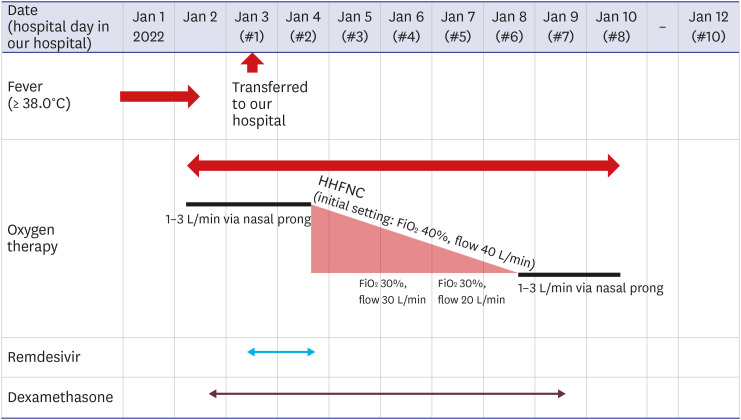
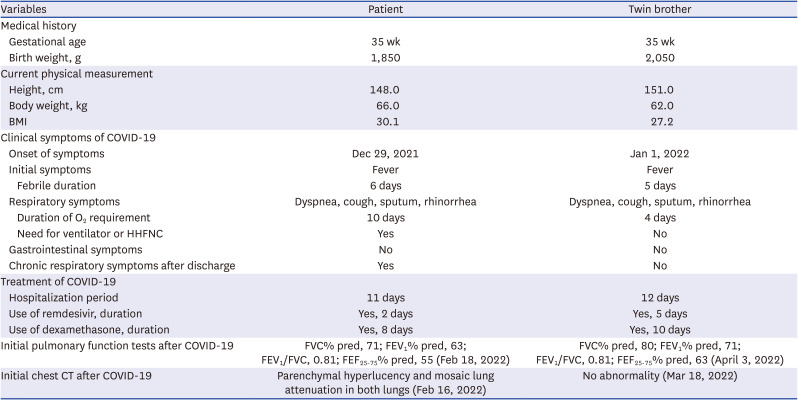
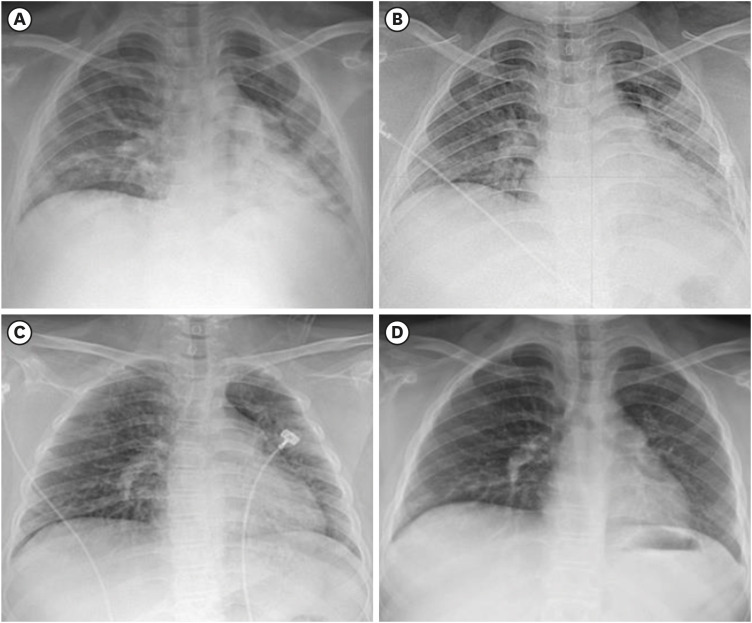
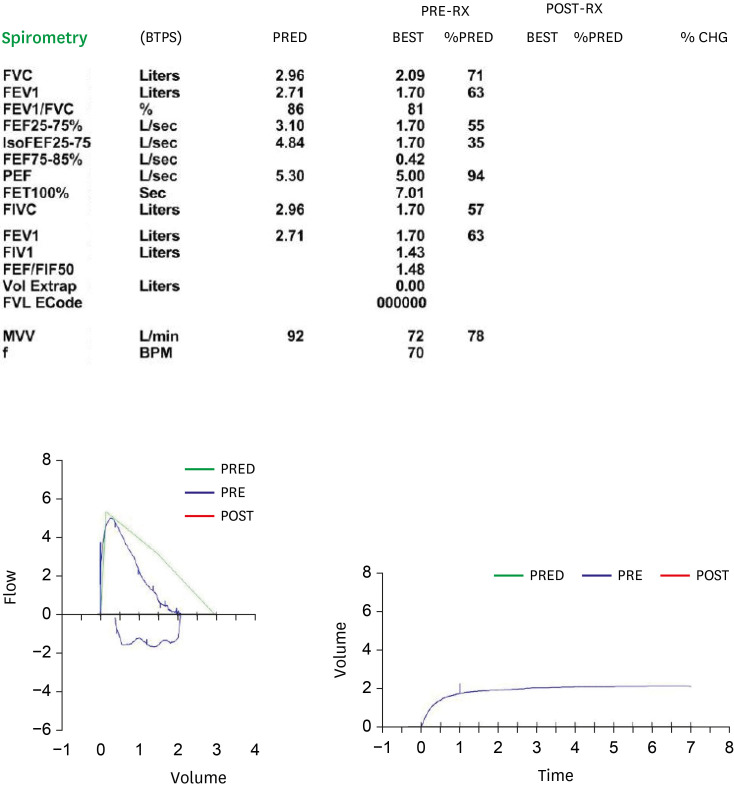
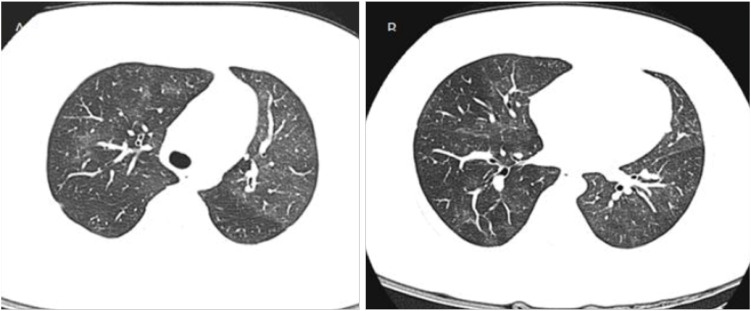




 PDF
PDF Citation
Citation Print
Print



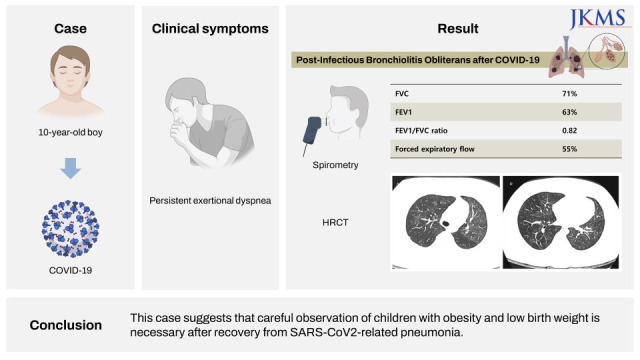
 XML Download
XML Download